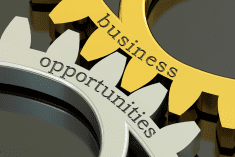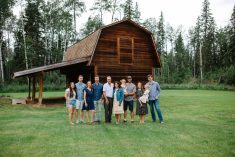Trust is at the foundation of every business and personal interaction. We can’t see it or touch it, but we sure know when it’s missing. It’s a red flag.
While trust can feel like an intangible, Halifax business consultant Natalie Doyle Oldfield says that its impact can be measured and there are clear benefits of high trust levels within organizations.
She points to a study of 30 men’s college basketball teams with high levels of trust in the coach. Those teams won more games. And restaurants, where employees trusted their managers, had higher revenues. She says that trust is a core leadership skill.
Read Also

What to consider when setting up farm-related business ventures
Things to consider before launching a farm-adjacent side business.
Oldfield’s academic research explored what makes businesses successful. She spent years studying trust and helping hundreds of companies to build and rebuild trust with employees, customers and suppliers. Turns out that success always came down to trust. “Trust was the most critical aspect,” she says.
Oldfield has authored two books on trust and developed diagnostics and tools to measure and improve a company’s “trust equity.” Companies with “high trust equity” perform more than twice as well as companies with “low trust equity.” These companies have higher productivity, more innovation, reduced employee turnover and have an easier time recruiting talent.
So, how do you know if your farm business has a trust issue?
In addition to low productivity, poor employee engagement and reduced innovation, Oldfield says trust issues can manifest as decreased revenue, increased complaints from customers, suppliers and distributors, and difficulty recruiting new employees. If employees don’t want to attend an end-of-year celebration, that could also be a sign of a lack of trust within the organization.
Fortunately, Oldfield says building trust is a skill that farm managers can develop by focusing on the three main pillars of trust during each interaction with team members.
Listen carefully with empathy and compassion. Oldfield says, “Listening and empathy are cornerstone skills of smart leadership.” Having empathy means understanding the other person’s situation and taking
their perspective into consideration. It engenders compassion and kindness. “We cultivate trust when we show we care.”
To really listen, we have to be fully present, continues Oldfield. That means listening without judgement and paying attention to non-verbal cues such as posture, body language, facial expressions, tone and volume.
She recommends ditching one of the biggest “trust-busters” ever invented, your phone. Her advice is to not even bring it to meetings. Even when the phone is face down on the table, it’s sending a message that you aren’t listening with your full attention. “It sends a message that what’s happening on that phone is more important than listening. We know what it feels like when someone is distracted versus giving us their whole attention.”
Act with the best interest of the customer, stakeholder or employee in mind. “People are making their choices around who to buy from and who to work with based on trust,” says Oldfield. “When it comes to building trust with employees, it’s about a serving mindset. It’s about authenticity, curiosity and empathy.”
“Employees and customers are demanding more transparency, accountability and a social conscience from their leaders. They want to work for and with leaders who are trustworthy.”
She says that trust is future-looking. “It’s a belief that someone is going to do the right thing in the future.”
Trust is relational and our motives, intentions and mutual understanding are important to holding relationships together with employees, customers and suppliers. “Actions speak louder than words. It’s about walking the talk.”
Good communication. “Language should be clear, transparent, empathetic, honest, concrete and concise,” says Oldfield. “Trust starts with the leader. Do they have a clear purpose and a clear vision? Clarity inspires trust. Self-awareness is a good place to start so you can articulate your goals.”
Kelly Dobson, executive coach and fourth-generation Fairfax, Man., farmer, agrees. He says that honest communication is essential but notes it is often lacking on family farms. Too often we avoid having the hard conversations because we want to “keep the peace” and “that is a killer for business results,” he says.
Dobson points out that the data indicates that farm managers know they aren’t saying what they think, and the farm team knows it too. “When you don’t want to have the hard conversations and it’s in misalignment with what you think and feel, people pick that up… it erodes trust.”
This tendency to avoid uncomfortable topics is particularly evident during farm succession planning, he says. “There can be a lot of energy tied up in not being clear with others.”
In organizational psychology research, this is referred to as courageous authenticity. So, what does that look like? Dobson says it means being vulnerable, willing to have hard conversations, being transparent, acknowledging what you don’t know, and surrounding yourself with the smartest people you can find.
But knowing something and putting it into practice are two different things, he says. Even when leaders know what behaviour they are aiming for, it can be difficult to change how they interact with others. Good leaders invest in themselves through education, training and coaching.
Oldfield says that trust is strengthened through the sum of experiences. “It’s cumulative.”
Managing change
It can be especially challenging to maintain trust during times of change, says Natalie Doyle Oldfield, a Halifax, N.S., business consultant who has helped hundreds of companies to build and rebuild trust with employees, customers and suppliers. Oldfield says that it can take years to build trust and only seconds to destroy it.
Change can threaten the trust within your team leading to confusion, resistance and distrust. Trust and safety go hand-in-hand.
To navigate change while strengthening trust, Oldfield’s advice is to:
- Communicate early and often. Keep your team informed about what’s happening, why it’s happening and how it has an impact on them. Silence only creates space for assumptions.
- Acknowledge the impact. Change is hard. Don’t dismiss how employees feel. Show empathy. Listen. Let them know they are seen and heard.
- Involve your team. Engage your employees in the path forward and invite feedback.
- Stay consistent and reliable. In times of change, consistency builds stability. If you’ve made promises, honour them. If you can’t, be honest about why.
- Lead with transparency. Trust grows when leaders are open about the road ahead, even when it’s tough.
Resources
- Trusted: The Proven Path to Customer Loyalty and Business Growth, a book by Natalie Doyle Oldfield (2024)
- The Power of Trust: How Top Companies Build, Manage and Protect It, a book by Natalie Doyle Oldfield (2017)
- National Farm Leadership and InSight Programs. Info available at leader-shift.ca/
















